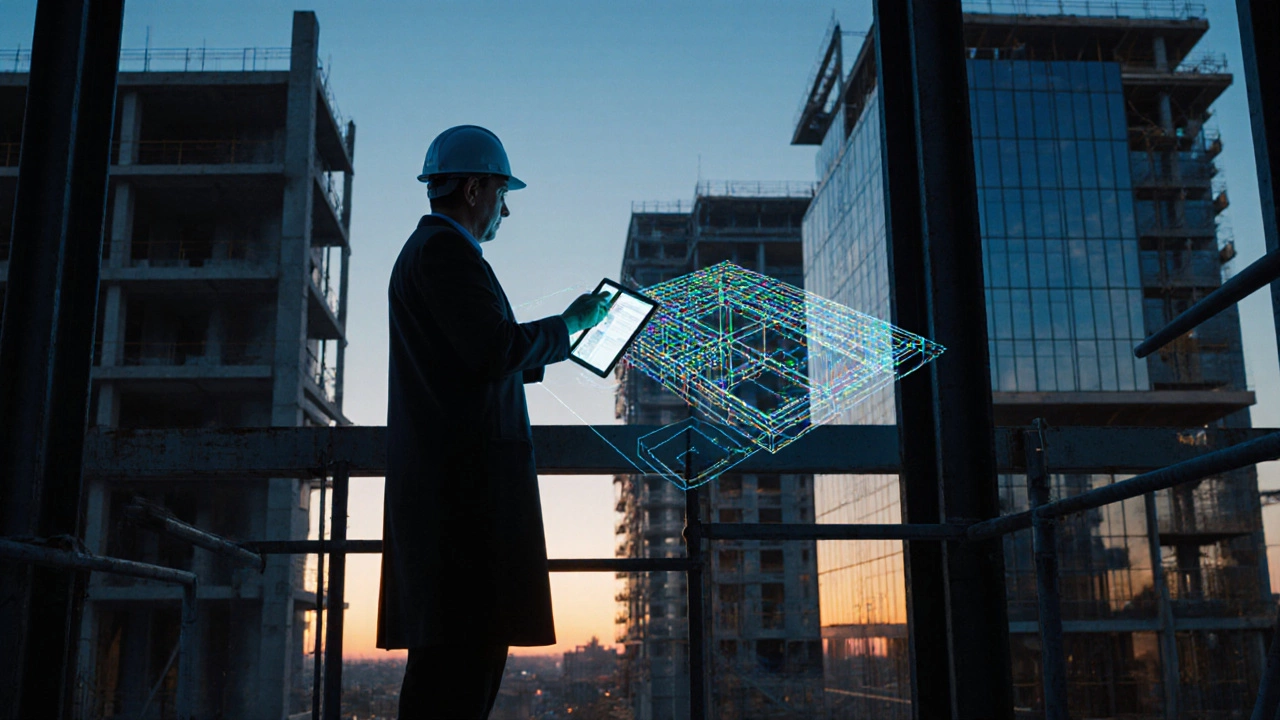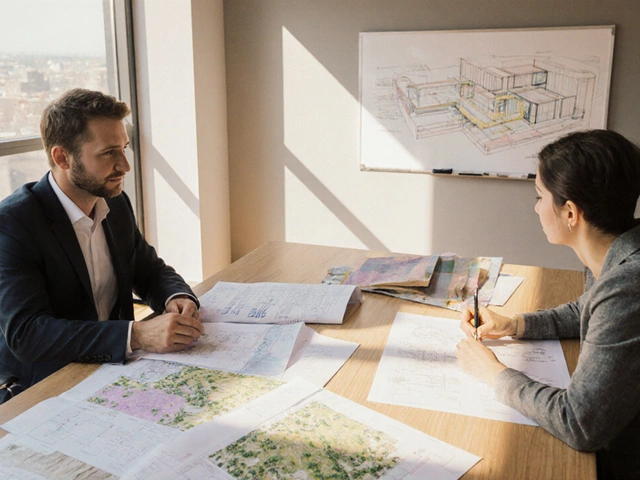Understanding Architectural Services: Definition, Scope, and Benefits

Architectural Services Fee Calculator
Architectural Service Cost Calculator
Estimate your architectural service costs based on project type and pricing model
Estimated Cost Breakdown
When you hear the term Architectural Services is the professional activities an architect provides, ranging from initial concept to construction oversight, you might wonder what exactly falls under that umbrella. In simple terms, it’s the suite of tasks that turn a client's vision into a built reality, while navigating codes, budgets, and timelines. Below we’ll unpack the core components, why they matter, and how to get the most out of them.
What Are Architectural Services?
Architectural services encompass every step of the building process where design expertise is needed. This includes gathering a Project Brief - a detailed description of the client’s goals, site constraints, and budget , shaping concepts, producing technical drawings, and supervising construction to ensure the design intent is realized.
These services are usually delivered in a series of phases, each with specific deliverables. The scope can vary widely depending on the project size, complexity, and the level of involvement the client desires.
architectural services are essential because they blend creativity with technical rigor, turning abstract ideas into safe, functional, and aesthetically pleasing spaces.
Key Phases of Architectural Services
The industry standard breaks the work into six main stages. The table below gives a quick glance at what each phase entails, who’s involved, and typical outputs.
| Phase | Primary Activities | Typical Deliverables |
|---|---|---|
| Pre‑design / Programming | Client interviews, site analysis, feasibility studies | Project brief, site analysis report, budget outline |
| Schematic Design | Concept sketches, massing models, early cost estimates | Sketch plans, 3‑D massing models, schematic cost report |
| Design Development | Refine layouts, select materials, coordinate engineering | Detailed floor plans, sections, material palettes, updated cost estimate |
| Construction Documents | Produce full construction drawings, specifications | Construction drawings, technical specifications, permit sets |
| Bidding / Procurement | Assist client in contractor selection, answer RFIs | Bid packages, contractor shortlist, clarification responses |
| Construction Administration | Site visits, review sub‑mittals, issue change orders | Site observation reports, punch‑list, final completion certification |
Roles and Responsibilities of an Architect
At the heart of architectural services is the Architect - a licensed professional responsible for design integrity, code compliance, and overall project coordination. While the architect leads the design, they also collaborate with engineers, interior designers, landscape architects, and construction managers to ensure a cohesive outcome.
- Design Authority: Develops concepts that meet aesthetic, functional, and sustainability goals.
- Regulatory Liaison: Ensures plans satisfy local building codes, zoning rules, and accessibility standards.
- Cost Steward: Works with cost estimators to keep the project within budget while balancing quality.
- Construction Oversight: Conducts site inspections, reviews contractor work, and resolves design‑related issues.
In larger projects, the architect may delegate portions of the work to junior staff or specialist consultants, but they retain ultimate responsibility for the final product.
How Architectural Services Interact with Regulations
Compliance is non‑negotiable. From fire safety to energy performance, every jurisdiction imposes specific requirements. During the Construction Documents phase, architects embed these rules into the drawings and specifications, preparing a Building Permit application that the local authority must approve before any ground is broken.
Key regulatory touchpoints include:
- Zoning and setbacks - dictate where a building can sit on the site.
- Structural codes - set minimum requirements for load‑bearing elements.
- Accessibility (e.g., ADA or NZ Standard 4300) - ensure inclusive design.
- Energy standards - require insulation levels, glazing performance, and sometimes renewable energy integration.
Missing or misinterpreting any of these can cause costly redesigns, delays, or even legal penalties, which is why architects work closely with code consultants and local officials.
Cost Factors and Pricing Models
Clients often ask, “How much will architectural services cost?” The answer depends on project size, complexity, and the chosen fee structure. Common models include:
- Lump‑Sum Fee: A fixed amount agreed upon early, ideal for well‑defined projects.
- Percentage of Construction Cost: Typically 5‑15% of the total building cost; aligns the architect’s incentives with budget control.
- Hourly Rate: Used for consulting, feasibility studies, or small engagements.
- Design‑Build Fee: When the architect also acts as the contractor, a single fee covers both design and construction.
Additional cost drivers include site conditions (e.g., contaminated soil), sustainability targets (LEED, Green Star), and the level of detail required in documentation. Transparent communication about these variables early on prevents surprises later.

Choosing the Right Architectural Service Provider
Not every architect is a perfect fit for every project. Here’s a quick checklist to help you evaluate potential firms:
- Portfolio Relevance: Look for completed projects similar in scale, program, and style.
- Licensing and Experience: Verify local registration and years of practice.
- Process Transparency: Does the firm outline each phase, deliverables, and decision points?
- Collaboration Style: Some firms prefer tight control; others thrive on client co‑creation. Choose what matches your comfort level.
- Technology Adoption: Firms using Building Information Modeling (BIM) often deliver more coordinated drawings and can simulate performance early.
- Sustainability Expertise: If green design matters, ask about certifications and past energy‑efficiency projects.
Interview at least three candidates, request references, and compare fee proposals side by side before committing.
Common Pitfalls to Avoid
Even seasoned clients slip into traps that inflate costs or stall progress. Keep an eye out for:
- Skipping the Project Brief - vague goals lead to redesigns.
- Under‑estimating permit timelines - delays can push the entire schedule.
- Changing scope mid‑construction without a clear change‑order process - leads to disputes.
- Choosing the cheapest architect without reviewing competency - may compromise safety and design quality.
- Neglecting post‑occupancy evaluation - you miss learning lessons for future projects.
Proactively managing these risks saves time, money, and headaches.
Frequently Asked Questions
What exactly does an architect do during the design development phase?
During design development, the architect refines the schematic concepts into detailed drawings, selects specific materials, coordinates structural and MEP (mechanical, electrical, plumbing) systems, and updates cost estimates. This stage produces a clear set of plans that can be turned into construction documents.
Do I need architectural services for a small residential renovation?
If the renovation involves structural changes, alterations to the roof, or changes that affect fire safety, most councils require a licensed architect or a building designer. Even for cosmetic updates, an architect can add value through space planning and design cohesion.
How are architectural fees calculated?
Fees can be a fixed lump sum, a percentage of the total construction cost (usually 5-15%), an hourly rate, or a design‑build arrangement. The chosen method depends on project scope, risk allocation, and client preference.
What is BIM and why should I care?
Building Information Modeling (BIM) is a digital 3‑D process that integrates geometry, spatial relationships, and data about building components. It improves coordination, reduces clashes, and allows simulation of performance (energy, lighting, structural behavior), often saving time and money during construction.
Can architectural services help with sustainability goals?
Yes. Architects can advise on passive design strategies, select low‑embodied‑carbon materials, and integrate renewable energy systems. They also prepare documentation for green certifications such as LEED, Green Star, or the New Zealand Green Building Council standards.
Understanding the full breadth of architectural services empowers you to make smarter decisions, keep projects on track, and end up with spaces that truly work for you. Whether you’re building a new home, expanding a commercial office, or renovating a heritage shop, the right architect‑client partnership is the foundation of success.

